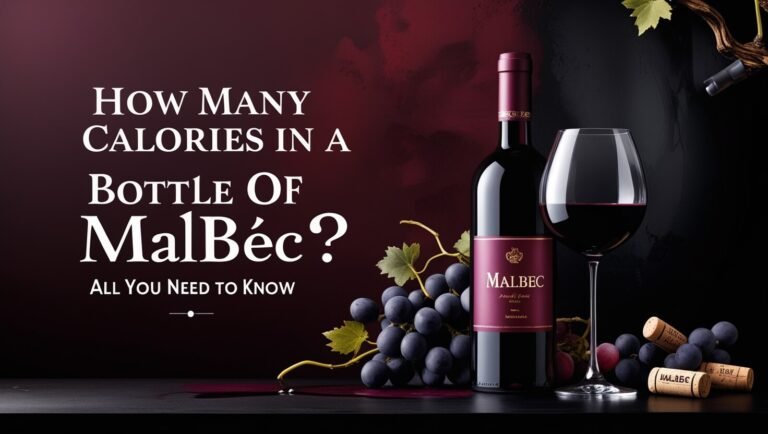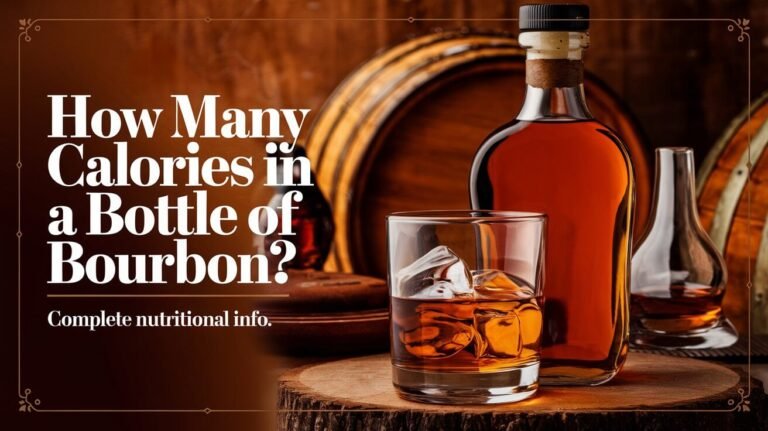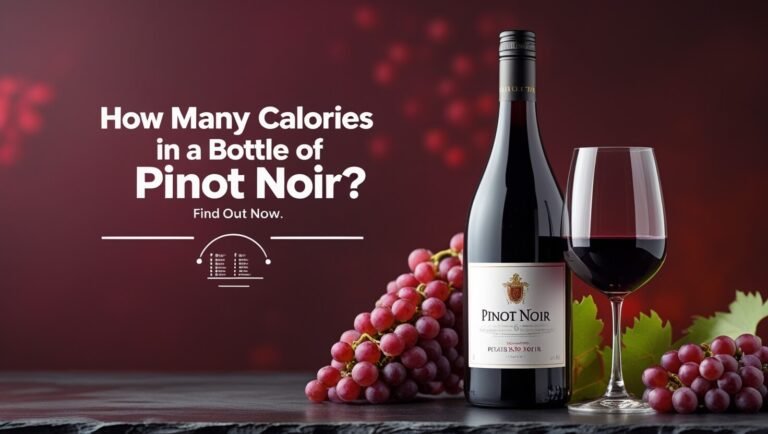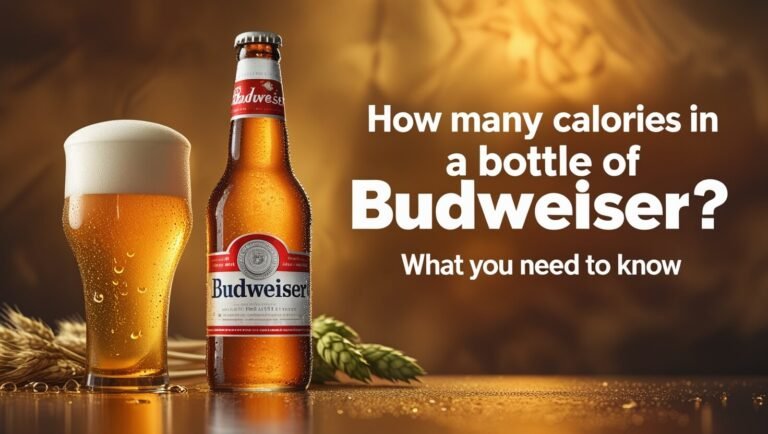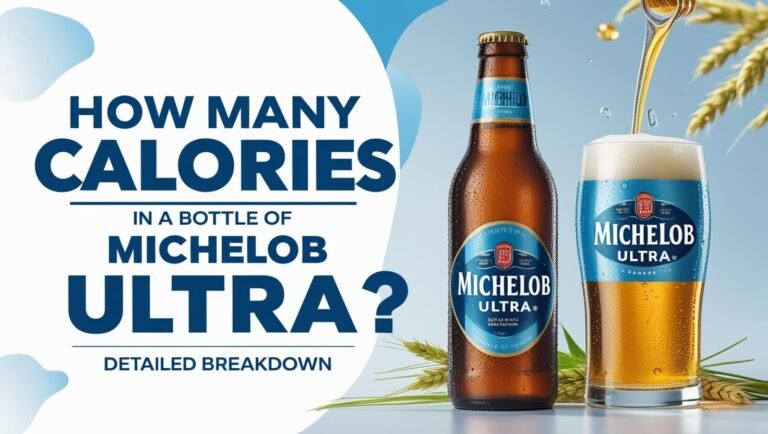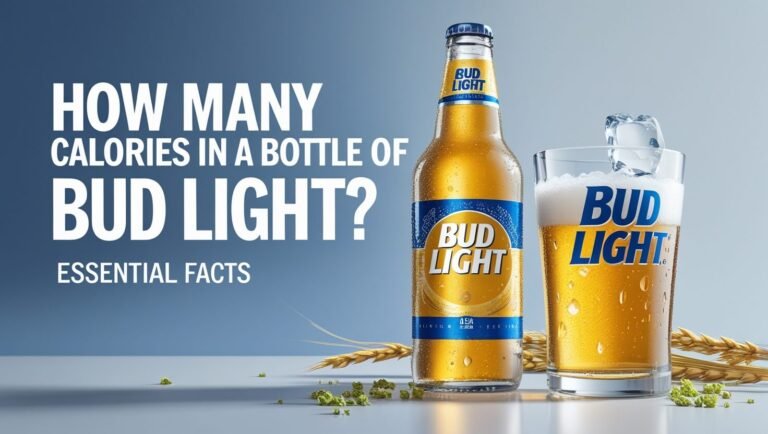How Many Calories In A Bottle Of Cab?
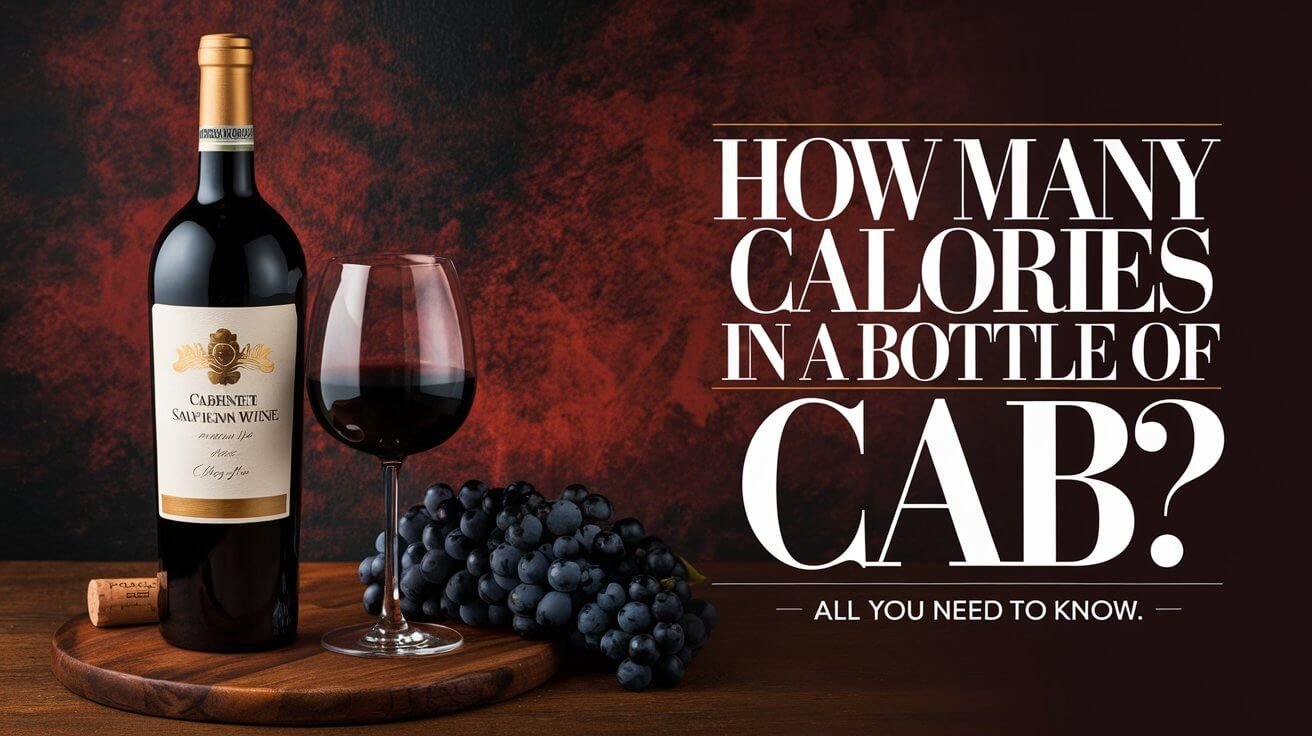
Ever wondered how many calories are in a bottle of cab? A standard 5-ounce serving of Cabernet Sauvignon wine has about 122 calories. Knowing the calorie count in a bottle of Cabernet is key to making smart choices about your wine drinking.
A 750ml bottle of Cabernet has around 610 calories. This info helps you keep your diet balanced while enjoying your favorite wine. It’s all about being aware of the calories in Cabernet Sauvignon.
The Basic Facts About Cabernet Calories
Understanding cabernet sauvignon calories starts with knowing the bottle size and servings. A standard bottle is 750 milliliters, or about 25 ounces. The calories in a bottle can change based on the wine type and alcohol level.
A 5-ounce serving of Cabernet Sauvignon has about 122 calories. For context, a 125ml glass has around 120-125 calories. This is due to the alcohol, which is usually 13-15% in Cabernet Sauvignon.
Standard Bottle Size and Servings
A typical bottle of Cabernet Sauvignon has about 500-600 calories. This breaks down to around 120 calories per 5-ounce serving. Remember, the calorie count can vary with the wine and its alcohol level.
Calorie Distribution Per Pour
The number of calories in a pour changes with the serving size. For example, a 175ml glass has about 160 calories, while a 250ml glass has around 211 calories. Knowing this can help you choose your wine wisely.
Alcohol Content Impact on Calories
The alcohol in Cabernet Sauvignon greatly affects its calorie count. With an average alcohol content of 13.5%, it tends to have more calories than some red wines. But, looking at the wine’s nutrition information is key to making good choices.
How Many Calories in a Bottle of Cab: Complete Breakdown
A 750ml bottle of Cabernet Sauvignon has about 610 calories. The number of calories changes with the serving size. It’s key to check the wine calorie chart for a detailed look at calories in different sizes.
For a 125ml glass of Cabernet Sauvignon, you’ll get around 120-125 calories. A 175ml serving has about 150-160 calories. The average alcohol content of Cabernet Sauvignon is between 13% to 15%. This alcohol content adds to the calorie count.
Here’s a comparison of the calorie count in different types of wine:
- Pinot Noir: 110-117 calories per 125ml glass
- Riesling: approximately 110 calories per 125ml glass
- Sauvignon Blanc: approximately 100 calories per 125ml glass
- Merlot: approximately 110 calories per 125ml glass
- Chardonnay: approximately 100 calories per 125ml glass
The calorie count in Cabernet Sauvignon can be broken down into the following table:
| Serving Size | Calories |
|---|---|
| 125ml | 120-125 |
| 175ml | 150-160 |
| 750ml | 610 |
The calories in Cabernet Sauvignon and a wine calorie chart help you make better choices and align wine with your dietary goals.
Cabernet Sauvignon’s Nutritional Profile
Understanding Cabernet Sauvignon’s nutrition is key. It’s important to look at the wine nutrition information and cabernet sauvignon nutrition facts. A 5-ounce serving has about 122 calories in red wine. It has almost no fat and a bit of protein.
The main parts of Cabernet Sauvignon are water, carbs, and alcohol. It has about 3.8g of carbs per 5-ounce serving. This is because most sugars turn into alcohol during fermentation. So, Cabernet Sauvignon has very little sugar, making it good for those watching their sugar intake.
Additional Nutrients
Cabernet Sauvignon also has a small amount of protein and some micronutrients. The exact nutrient composition can change based on the wine and how it’s made. But, a typical 5-ounce serving might have:
- 0.1g of protein
- 3.8g of carbohydrates
- 0g of sugar
- 0g of fat
Cabernet Sauvignon’s nutrition helps wine lovers make informed choices, allowing them to enjoy wine while maintaining a balanced diet.
Different Pour Sizes and Their Caloric Impact
The size of your wine glass matters when looking at the wine calorie chart. A standard 5-ounce glass of Cabernet Sauvignon has about 122 calories. But, the calories can change with the pour size. For example, a 750ml bottle has around 600-625 calories, which is about 125 calories per 5-ounce serving.
To understand better, here are the calories in different pour sizes of cabernet sauvignon calorie content:
- Small glass (125ml): 103 calories
- Large glass (250ml): 207 calories
- Bottle (750ml): 620 calories
It’s key to think about the calories in a bottle of wine when watching your daily calories. Being aware of the pour size and calorie content helps you make better wine choices.
Keep in mind, the calorie count can differ based on the wine type and alcohol level. Always check the wine calorie chart to pick the right wine for your diet.
Comparing Cabernet to Other Wine Varieties
When looking at wine calorie charts, it’s key to focus on red wine calories, like those in cabernet sauvignon. A 5-ounce serving of cabernet sauvignon has about 122 calories. Merlot has around 120 calories in the same amount, while chardonnay has about 100 calories.
To understand the calorie differences in various wines, let’s examine a table:
| Wine Variety | Calories per 5-ounce serving |
|---|---|
| Cabernet Sauvignon | 122 |
| Merlot | 120 |
| Chardonnay | 100 |
| Pinot Noir | 121 |
The table shows that different wines have varying calorie counts. By looking at wine calorie charts and focusing on red wine calories, like those in cabernet sauvignon, you can choose wisely.
Factors Affecting Cabernet’s Calorie Content
Several factors can change the wine nutrition information of Cabernet Sauvignon. The grape type, wine style, and winemaking methods all matter. For example, the leftover sugar in the wine can greatly affect its calorie count. A standard 125ml glass of Cabernet Sauvignon has about 120-125 calories. A 175ml glass has around 150-160 calories.
The calories in red wine also depend on the wine’s type and alcohol level. On average, a 5-ounce glass of red wine has about 125 calories. But, this can vary from 100-175 calories per glass, based on the wine’s details. Here are some approximate calorie counts for different wines:
- Champagne/Sparkling Wine: 96 calories per 5 oz serving
- Sauvignon Blanc: 122 calories per 5 oz serving
- Merlot: 122 calories per 5 oz serving
- Cabernet Sauvignon: 122 calories per 5 oz serving
Understanding wine nutrition and the calorie content of Cabernet Sauvignon helps you make better choices, whether you’re watching calories or simply enjoying wine.
| Wine Type | Calories per 5 oz serving |
|---|---|
| Champagne/Sparkling Wine | 96 |
| Sauvignon Blanc | 122 |
| Merlot | 122 |
| Cabernet Sauvignon | 122 |
Tracking Wine Calories in Your Diet
To make smart choices about wine, tracking its calories is key. A wine calorie chart helps keep an eye on calorie intake. A standard bottle of wine (750 milliliters) has about 600 calories. Knowing the Cabernet Sauvignon nutrition facts is also important, as a glass has around 122 calories.
It’s important to measure wine servings to track calories. Here are some tips:
- Use a wine pourer to measure the exact amount of wine in each serving
- Check the wine calorie chart to determine the calorie count for each serving size
- Be aware of the calories in a bottle of wine to avoid overconsumption
Popular Wine Apps
There are many wine apps to help track calories, like Wine Tracker and Calorie Counter. These apps offer a detailed wine calorie chart and let you track daily wine calorie intake. By using these tools and knowing Cabernet Sauvignon nutrition facts, you can choose wine wisely and stay on track with your diet.
Low-Calorie Cabernet Options
Enjoying a glass of Cabernet Sauvignon without worrying about calories is possible. The cabernet sauvignon calorie content changes based on alcohol and carbs. A 125ml glass has about 120-125 calories, which is not too high.
Knowing about wine nutrition information helps in making better choices. Look for Cabernet Sauvignons with less alcohol and carbs. For example, a 125ml serving might have 80-130 calories and under 4 grams of carbs.
Alternative Selections
Here are some low-calorie Cabernet Sauvignon options:
- Mind and Body: 90 calories per 5oz glass
- Klean Cabernet Sauvignon: 85 calories per 5oz glass
These wines are tasty and low in calories. They’re perfect for those who want to enjoy Cabernet without overdoing it.
Reading Wine Labels
When picking a low-calorie Cabernet, always check the label. Look for wines with lower alcohol and carbs. This way, you can enjoy your Cabernet while staying healthy.
Balancing Wine Enjoyment with Calorie Goals
Enjoying wine while watching calories is key. Know your serving sizes and pick wines with fewer calories. A standard bottle has 500 to 600 calories. A 125ml glass of Cabernet Sauvignon has about 120 calories. Use a wine calorie chart to track calories in a bottle.
Knowing the nutrition facts of Cabernet Sauvignon is important. A 5-ounce glass has 122 calories, with 1.5g of carbs and little sugar. This knowledge helps you enjoy wine without going over your calorie limit. Here are some tips to enjoy your wine:
- Choose a lower-calorie wine, like a dry white or light-bodied red.
- Stick to a standard 125ml glass size.
- Use a wine calorie chart to make smart choices.
Follow these tips to enjoy Cabernet Sauvignon while keeping calories in check. Always drink responsibly and in moderation. Try different wines to find the best fit for your taste and diet.
Wine Storage Impact on Caloric Value
Many factors can change the calorie content of wine. Storage conditions are key. Temperature and aging can affect the calories in a wine, like cabernet sauvignon. Storing wine right keeps its quality and nutrition.
Research shows storage affects wine calories. A 750 milliliter bottle has about 600 calories. But, storage conditions can change this. Keep wine at 45°F to 65°F to keep its quality and nutrition.
Temperature Effects
Temperature is very important for wine storage. Extreme temperatures can harm the wine, changing its calories. For example, a glass of red wine, like cabernet sauvignon, has about 125 calories. But, high temperatures can increase these calories as the wine degrades.
Aging Considerations
Aging also changes wine calories. As wine ages, calories can go down. For instance, a bottle of cabernet sauvignon has about 610 calories when new. But, after years, it might have only 500 calories.
Here is a summary of the calorie content of different wines, including cabernet sauvignon:
| Wine Type | Calorie Content (per 5oz glass) |
|---|---|
| Cabernet Sauvignon | 122-125 calories |
| Merlot | 120 calories |
| Pinot Noir | 121 calories |
| Syrah/Shiraz | 123 calories |
Knowing how storage affects wine calories helps you choose wisely. Proper storage and aging let you enjoy your favorite wines, like cabernet sauvignon, while watching calorie intake.
Regional Variations in Cabernet Calorie Content
The calorie content of Cabernet Sauvignon can change based on where it’s made. For example, a bottle from California, USA, might have different calories than one from another area.
Things like climate, soil, and how the wine is made play a big role. This means the calories in red wine can vary a lot. Knowing this helps you choose the right wine for your diet.
In places like California, you often find full-bodied Cabernet Sauvignon with more calories. But other areas might have lighter wines with fewer calories. Knowing these differences helps you pick the best wine for your health goals.
Here are some key points to consider when exploring regional variations in Cabernet Sauvignon:
- Climate and soil conditions can impact the calorie content of Cabernet Sauvignon
- Winemaking techniques can also influence the cabernet sauvignon calorie content
- Regional variations can result in different calories in red wine
By understanding these factors and staying up-to-date on wine nutrition, you can enjoy Cabernet Sauvignon while watching your calorie intake.
Smart Sipping: Making Informed Choices About Wine Calories
As you explore different wines, it’s key to know about wine calorie content. Enjoying a glass of Cabernet Sauvignon or other wines, remember the serving sizes. Look for lower-calorie options when you can.
Check the cabernet sauvignon nutrition facts to see how calories affect your favorite wines. Things like alcohol content, sugar levels, and storage can change wine calorie chart values. Knowing this helps you enjoy wine without overdoing it.
The secret to smart sipping is finding a balance. Enjoy your wine, but do it with knowledge. Make choices that fit your health and wellness goals.
Great Questions:
How many calories are in a bottle of Cabernet Sauvignon wine?
A standard 750ml bottle of Cabernet Sauvignon wine has about 625 calories.
What factors affect the calorie content of Cabernet Sauvignon wine?
Several things can change the calorie count of Cabernet Sauvignon. These include the grape type, wine style, alcohol level, and winemaking methods.
What is the nutritional profile of Cabernet Sauvignon wine?
Cabernet Sauvignon wine has carbs, sugar, and other nutrients. The exact nutritional values depend on the wine’s type.
How do different pour sizes affect the calorie count in Cabernet Sauvignon?
The calorie count in Cabernet Sauvignon changes with the serving size. A 5-ounce pour usually has about 125 calories.
How does the calorie content of Cabernet Sauvignon compare to other wine varieties?
Cabernet Sauvignon tends to have more calories than lighter reds and whites. This is because it has more alcohol.
What are some low-calorie Cabernet Sauvignon options?
Some Cabernet Sauvignons have fewer calories, often because they have less alcohol or special winemaking. Look at the wine labels to find these.
How can I track the wine calories in my diet?
There are tools and apps to track wine calories, including Cabernet Sauvignon. It’s also key to measure your wine servings accurately.
How does wine storage impact the caloric value of Cabernet Sauvignon?
Storage conditions, like temperature and aging, can change Cabernet Sauvignon’s calorie count. Older wines might have fewer calories due to evaporation and other factors.
Are there regional variations in the calorie content of Cabernet Sauvignon?
Yes, the calorie count of Cabernet Sauvignon can differ by region. This is because of factors like grape growing and winemaking practices.

